Gwanghwamun Deungsim (광화문등심)
2.2Km 2021-07-20
34, Jong-ro, 5-gil, Jongno-gu, Seoul
+82-2-722-2020
A restaurant that’s popular among workers for group dinners, it sells grilled meat. This Korean dishes restaurant is located in Jongno-gu, Seoul. The representative menu is grilled boneless ribs.
Innisfree - Sinseol-dong Station Branch [Tax Refund Shop] (이니스프리 신설동역)
2.2Km 2024-04-17
1F, 20, Wangsan-ro, Dongdaemun-gu, Seoul
-
Chamsutgol (참숯골)
2.2Km 2019-08-01
16, Mugyo-ro, Jung-gu, Seoul
+82-2-774-2100
Located in Mugyo-dong in Jung-gu, Seoul, Chamsutgol (참숯골) is an upscale restaurant serving hanu beef dishes. The restaurant uses only top quality hanu beef from young cattle (two years old or younger) raised on farms in Jeolla-do Province. For freshness and tenderness, the restaurant serves only fresh meat (not frozen) of A+ grade or higher. To bring out its juiciness and tenderness, the meat is grilled on a charcoal fire.
The elegant ambience and décor and the variety of rooms in different sizes make the restaurant a favorite choice for special events. It is also regularly visited by international tourists. Popular dishes are the sirloin steak and marinated ribs, doengjang soup, and yeongyang dolsotbap (rice served in a hot stone bowl).
Jigum - Jongno Branch [Tax Refund Shop] (JIGUM 종로)
2.2Km 2024-04-18
F1, F2, 21-8, Bukchon-ro, Jongno-gu, Seoul
-
Shinsegae Duty Free Shop - Myeong-dong Branch (신세계면세점 명동점)
2.2Km 2017-06-13
77, Toegye-ro, Jung-gu, Seoul
Opened in May 2016, the Shinsegae Duty Free Store in Myeong-dong offers culture, tourism, and shopping on the 8-12 floors of the main branch of Shinsegae Department Store. The shops sell famous international brands as well as top Korean brands for a global shopping experience. The store is located nearby popular tourist attractions N Seoul Tower and Namdaemun Traditional Market, making it easy to enjoy tourism and shopping in one location.
Shinsegae Duty Free Shop - Myeong-dong Branch Handicraft Store (신세계면세점 명동점 수공예품 매장)
2.2Km 2016-10-11
77, Toegye-ro, Jung-gu, Seoul
Korea Craft and Design Foundation Handicraft Store located within the giftshop of Shinsegae Duty Free Shop Myeong-dong Branch sells handcrafted everyday props and cultural crafts. Dedicated to the concept of "Artisans, and Artists," the store introduces young artists as well as famous handicraft masters along with their masterpieces of diverse genre in the world of Korean arts and craft.
PungGyeong [Korea Quality] / 풍경 [한국관광 품질인증]
2.2Km 2023-05-02
32-6 , Seonggyungwan-ro, Jongno-gu, Seoul
+82-10-7103-6993
PungGyeong, located opposite Sungkyunkwan Academy in Jongno-gu, Seoul, is a hanok-style guest house whose outer wall is painted with a stylish blue pine tree. The guest house is equipped with bedrooms and a kitchen/diner with a table. Residents can have toast for breakfast, and simple Korean meals are provided for guests staying more than two days. In the winter you can sample traditional Korean tea brewed by the owner.
Samwon Ilsik (삼원일식)
2.2Km 2021-03-19
32, Mugyo-ro, Jung-gu, Seoul
+82-2-777-3680
This is a Japanese cuisine located in Cheonggyecheon Stream, Seoul. This restaurant is one of Mugyo-dong's best kept secrets. The best menu at this restaurant is codfish stew.
Munmyo Confucian Shrine and Seonggyungwan National Academy (서울 문묘와 성균관)
2.2Km 2020-03-31
31, Seonggyungwan-ro, Jongno-gu, Seoul
+82-2-760-1472
Munmyo is a shrine dedicated to Confucius, whose teachings form the foundation of Confucianism. It is also dedicated to his disciples and other great Confucian scholars. Munmyo is not only the shrine but also the highest educational institution of the Joseon dynasty. Munmyo was once called as Munseonwangmyo since during the Tang dynasty, Confucius was named as King Munseon after his death and then it has been called as Munmyo since the Yuan dynasty.
The compound consists of two main areas: the Daeseongjeon houses shrines and the Myeongnyundang features seminar halls and other auxiliary facilities. Also, there are two dormitories, Dongjae and Seojae, which are collectively known as Sungkyunkwan. In front of the Myeongnyundang stands a ginkgo tree designated as Natural Monument No. 59. In spring and autumn, a ritual for Confucius and his disciples takes place.
Hwangudan Altar (환구단)
2.2Km 2020-05-07
112, Sogong-ro, Jung-gu, Seoul
+82-2-3396-5842
Hwangudan Altar, also called Hwandan Altar, refers to an altar complex for the rite of heaven. The rites were first performed in the Goryeo dynasty by King Seongjong in the first month of 983 (2nd year of his reign), but was repeatedly adopted and abolished, and eventually stopped at the start of the Joseon dynasty.
Then in 1456 (2nd year of King Sejo), the practice was temporarily standardized and the rites were performed at Hwangudan Altar again in 1457. However, rites were again abolished in 1464 (10th year of King Sejo). It wasn’t until 1897 (34th year of King Gojong) when the Joseon dynasty was renamed as the Korean Empire and King Gojong ascended to emperor, that the rite was revived.
Now, Hwangungu Shrine and three stone drums stand at the location of the former altar complex. The three stone drums symbolize the instruments used for the rites. The shrine was completed in 1899, two years after the altar was started in 1897. Today, the Hwangungu Shrine still stands within the hotel grounds of the Westin Chosun Hotel.

![Innisfree - Sinseol-dong Station Branch [Tax Refund Shop] (이니스프리 신설동역)](http://tong.visitkorea.or.kr/cms/resource/30/2888030_image2_1.jpg)
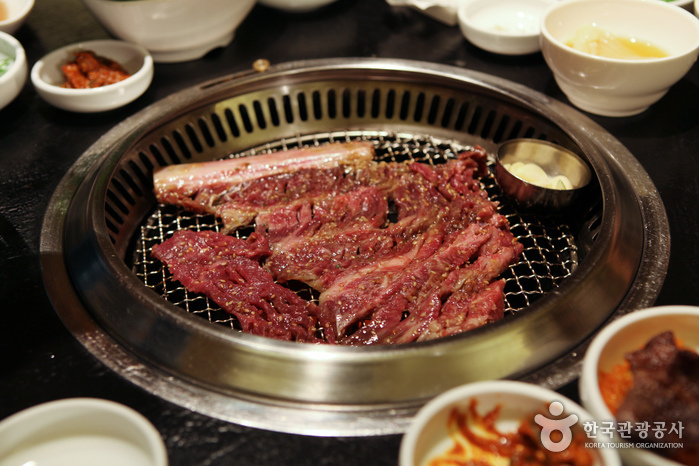
![Jigum - Jongno Branch [Tax Refund Shop] (JIGUM 종로)](http://tong.visitkorea.or.kr/cms/resource/52/2889052_image2_1.jpg)
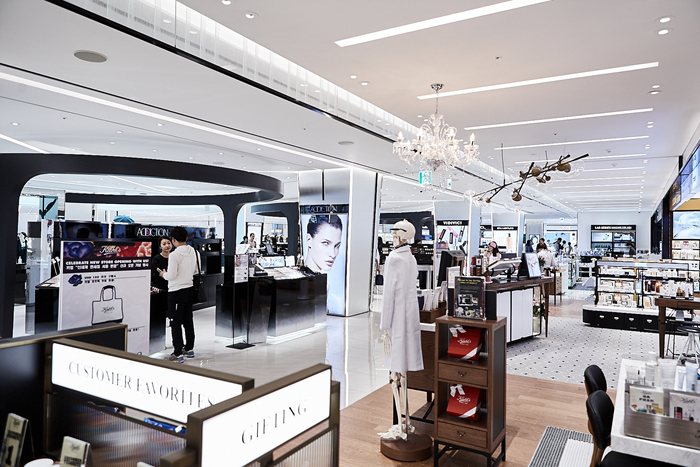
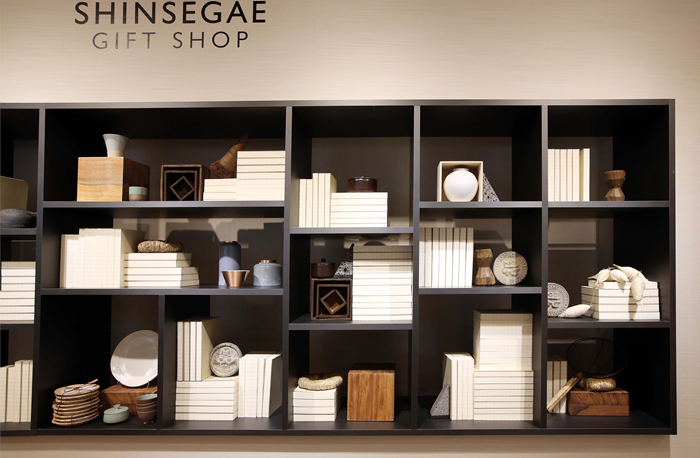
![PungGyeong [Korea Quality] / 풍경 [한국관광 품질인증]](http://tong.visitkorea.or.kr/cms/resource/80/2633780_image2_1.jpg)
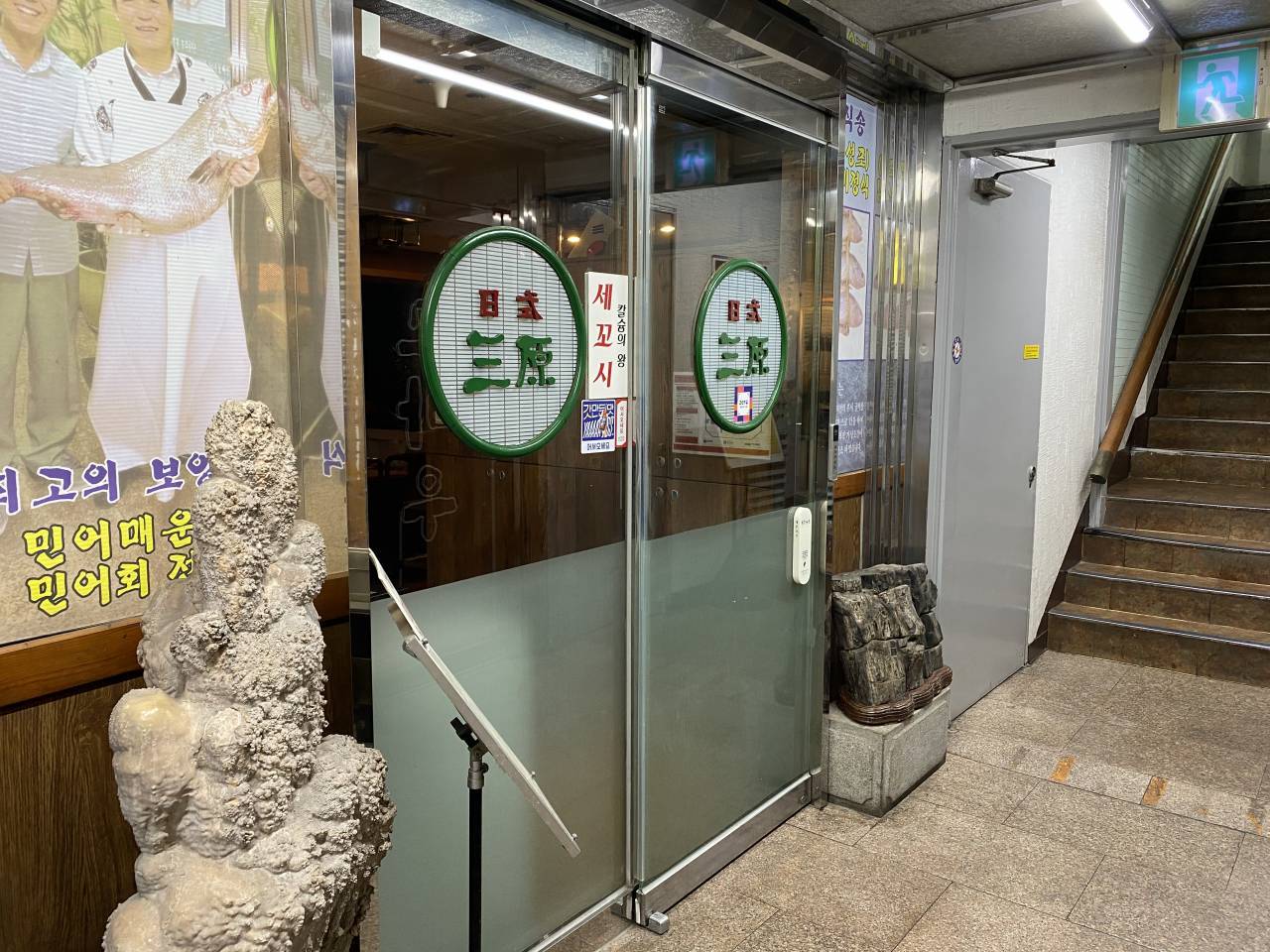
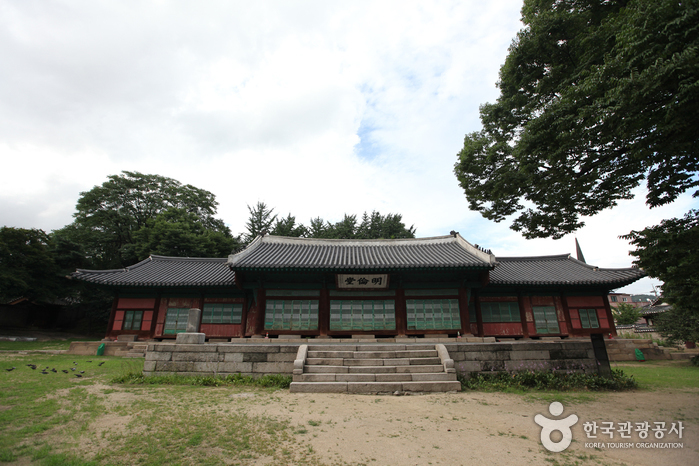
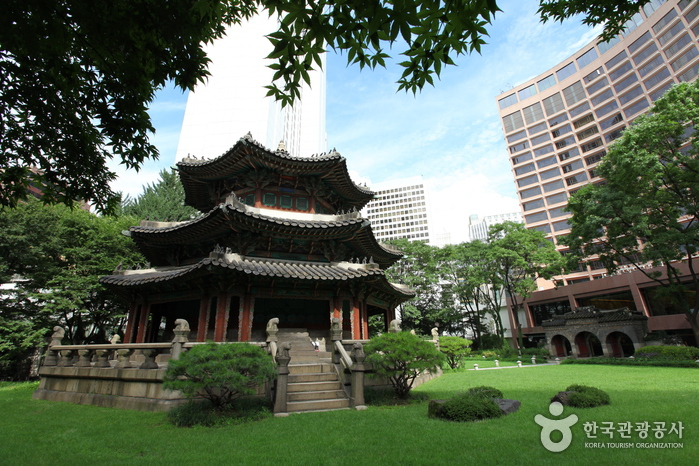
 English
English
 한국어
한국어 日本語
日本語 中文(简体)
中文(简体) Deutsch
Deutsch Français
Français Español
Español Русский
Русский